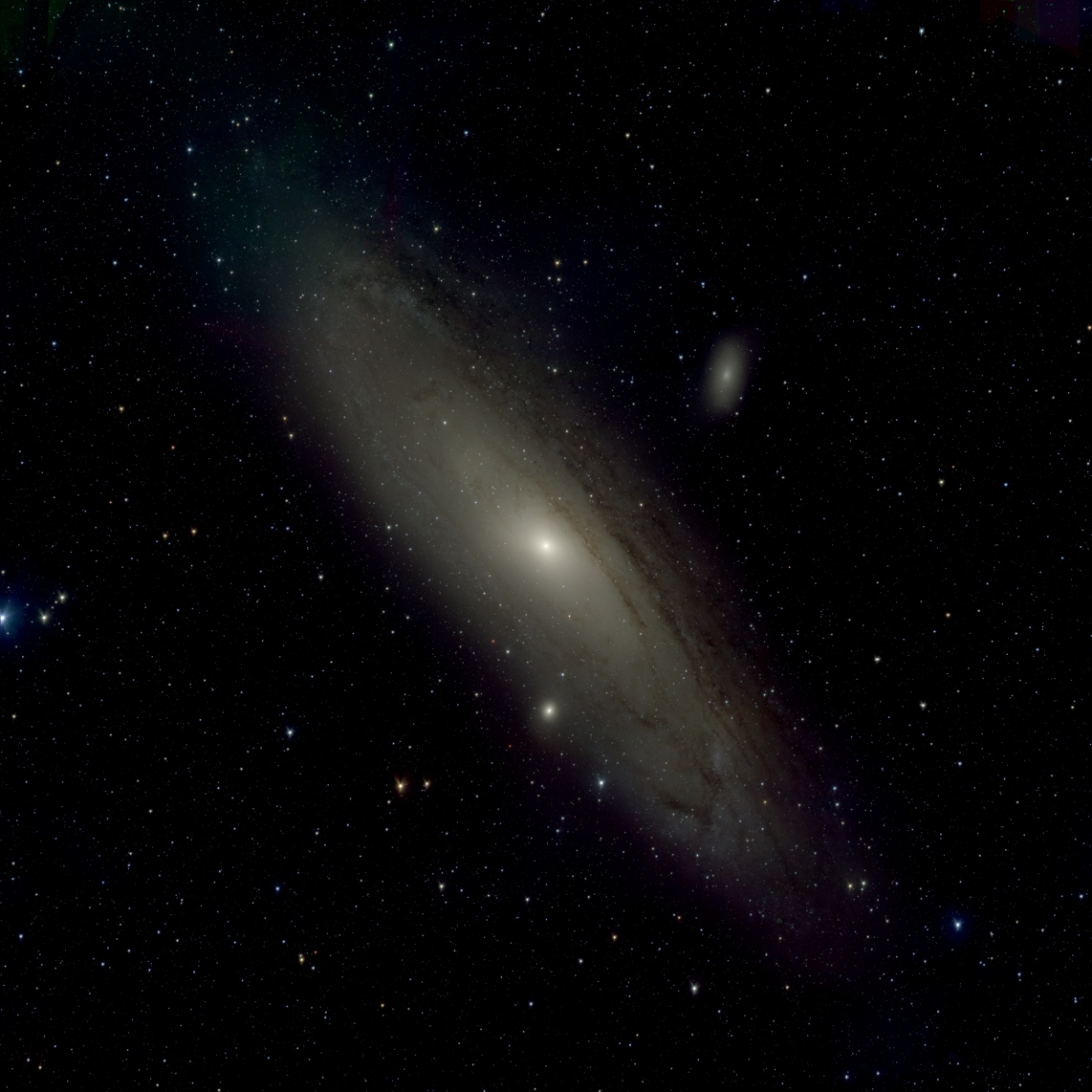
The largest time-domain survey facility in the northern hemisphere, the Wide Field Survey Telescope (WFST), took its first-light image on the closest large spiral galaxy to the Milky Way, the Andromeda Galaxy (known as M31). The picture shows a panoramic view of the Andromeda Galaxy and reveals distributions of bright and faint starlight in the galaxy and its surrounding celestial bodies, suggesting the dynamic processes occurring within the galaxy and interactions among galaxies.
The first-light image is a combination of 150 30-seconds g-, r-, and i-band images taken from Sep 9 to 13, enabling the measurement of brightness variations among celestial objects in M31 and its surrounding environment. By accumulating and stacking images, astronomers will be able to improve observing depth and thus discover fainter and more distant celestial bodies, gaining a deeper understanding of the structure of the Andromeda Galaxy and the neighboring environment.
Observational data taken by WFST will be simultaneously transferred to the University of Science and Technology of China and the Purple Mountain Observatory via two dedicated data lines in real time. The scientific data are planed to be released to the public after a proprietary period of 18–24 months.
Wall papers of the WFST first light image can be found at the ‘‘Wall Paper’’ in https://wfst.ustc.edu.cn/album pages.